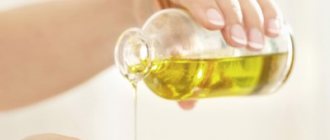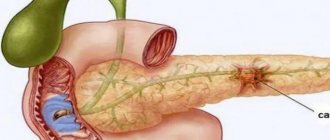“A wolf in sheep’s clothing” - this is how one can characterize this incredibly beautiful when flowering, but treacherous plant. It can easily kill a person, but it is expected to help treat cancer. This article tells how to recognize wolf's bast among other shrubs, why it is called that, how and where it can be used, and what to do if it is poisoned by its scarlet berries.
Wolf's bast - appearance of berries
Wolf's Bast
Few-branched, erect shrub, up to 150 cm high, with yellowish, easily peeled bark.
The leaves of the wolf's bast are alternate, oblong-lanceolate, crowded towards the top of the shoot, dark green. The flowers are medium-sized, dark pink with a strong scent, bloom before new leaves appear. The fruits are bright red oblong-oval berries. Wolf's bast blooms in April-May. The plant is highly poisonous.
The smell of flowers causes headaches.
What to do if you are poisoned by wolfberry
If a child or adult has eaten wolfberry, then you must immediately call an ambulance and take first aid measures. First of all, it is necessary to remove the source of poisoning from the body, that is, induce vomiting. A weak solution of potassium permanganate is suitable for this (the liquid should be light pink, not deep purple!). You can give the victim activated carbon or any other sorbent. If possible, give the victim a cleansing enema.
Berry poisoning can cause seizures and cardiac arrest. If there are heart medications in the medicine cabinet, it is necessary to give them to the patient, following the recommendations and the correct dosage. After providing first aid, it is necessary to force the person to lie down, take a calm position and wait for the ambulance to arrive. In almost all cases, hospitalization and further inpatient treatment follow.
The entire wolfberry bush is poisonous , so if the juice gets on your skin or if the plant simply scratches you, you need to wash the area with an antiseptic solution; if you don’t have anything at hand, potassium permanganate will do.
The dangers of eating wolfberry should be clear to everyone; it is especially important to convey this information to children. If you are planning a trip to the forest or live in a rural area, do not forget to tell your children about all the dangers that attractive and tasty-looking berries pose.
Wolf bast use in folk medicine
In folk medicine, an alcohol tincture of the bark and fruits of wolf bast (50 g of raw material per 500 ml of vodka, leave for 3 weeks in a dark place, shaking occasionally) is used externally for gout, neuralgia, and sciatica.
For paralysis of the tongue muscles, preparations from the bark are also used. In case of paralysis of the tongue muscles, alcohol tincture from the bark, dissolved in a teaspoon of water, you just need to hold it in your mouth for a while without swallowing.
Internal preparations from wolf bast are taken very carefully, due to their toxicity. For dropsy and scrofula, an extract from the roots is taken orally.
The bark is collected in the spring, the fruits - after ripening.
Wolf's bast is a highly poisonous plant. The bark is especially poisonous. The people gave him the nickname "wolf's bast." Six berries are enough to kill a wolf. And a person, after eating a few berries, will feel a burning sensation in his mouth, terrible thirst, and his body will begin to cramp. Death often occurs.
We read from Avicenna: “Very harmful to the liver. Two dirhams are lethal for a person. It kills, causing melancholy, vomiting and diarrhea...” So this plant cannot be treated in a friendly manner.
Medicinal properties of wolf's bast.
And the benefits from the wolfman come great. For any kind of disease he comes to the rescue: here are thrombosis, thrombophlebitis, paralysis, neuralgia, rheumatism, gout; and fungal skin lesions, itchy dermatoses, conjunctivitis, toothache, sore throat; and gastrointestinal diseases, colitis, ascites; and also such terrible diseases as malignant tumors of the throat, esophagus, stomach, uterine cancer, leukemia.
The use of the wolf's bast plant in the treatment of stomach and intestinal cancer.
Leave one gram, at most two grams of crushed fruits in a glass of distilled water for 10–12 hours. Take 5-7 drops 3-4 times a day in a glass of water after meals.
Medicinal plant wax bast for paralysis of the tongue muscles
Hold the bark tincture in your mouth for a while and spit it out. The tincture is prepared from 2 g of bark per 1 glass of vodka. Leave for 5-7 days.
The use of wolf's bast for inflammation of the trigeminal nerve.
A bark decoction helps: pour 2 g of bark into 200 ml of hot water, boil over low heat for 20 minutes, strain while still hot, squeeze. Add boiled water to the original volume. Take 5 drops 3 times a day after meals. The course of treatment is 5 days.
Medicinal plant wax bast used for leukemia.
Take 1 dried berry per day (swallow). The berries have high anti-leukemic activity. The dose indicated is for an adult. Do not give to children.
Folk use of the medicinal plant wolf's bast.
All parts of wolf's bast are used mainly externally as a highly irritating agent.
An alcoholic tincture of fruits or leaves is used for rubbing in chronic rheumatism, gout, paralysis, tumors, and abscesses.
Coumarin substances contained in the fruits reduce blood clotting, so the fruits are used for thrombophlebitis.
In folk medicine, a decoction of the roots is drunk as a strong sleeping pill for epilepsy: 20 g of roots per 100 ml of boiling water, drink 5.0 g of decoction at night.
Medicinal properties and harm
The active substances of wolf's bast strongly irritate the mucous membranes of the digestive tract. There is information that folk healers used decoctions and infusions of wolfwort as an emetic and laxative.
Meserein and dafnetoxin exhibit such beneficial properties as:
- anticoagulant;
- antibacterial;
- antitumor.
Research in recent years suggests the possibility of obtaining drugs for the treatment of thrombophlebitis from this plant. In the future, it is possible to use the anti-leukemic properties of the plant.
However, treatment with wolf bast is associated with a high risk of poisoning, which occurs as hemorrhagic gastroenteritis.
Wolf's bast contraindications
True, there are many contraindications. You should not use wolfberry preparations for any bleeding, as they, especially the berries, reduce blood clotting. Even in microdoses, they irritate the kidney parenchyma and are excluded in case of pyelitis, pyelonephritis, glomerulonephritis. Wolfberry is not recommended for heart failure, tachycardia, arrhythmia.
Even external rubbing is unacceptable during pregnancy.
Despite the growing popularity of wolfberry in recent years, especially for cancer, self-medication can be equated to suicide. Only a highly qualified herbalist can prescribe his medications.
Wolf's bast or common wolfberry (deadly) grows in central Russia.
A strongly branched shrub from the Wolf family. Its branches are twig-like, with gray bark covered with small brown spots. The leaves are alternate, oblong-lanceolate, collected at the ends of the branches. The leaves are bluish-green above, bluish below. The flowers are four-petalled, pink or white, fragrant, sitting on the sides of the branches in the axils of the leaves. The fruit is a juicy berry, bright red, sometimes yellow; grow directly on the stem.
All parts of the plant are poisonous! They contain a toxic substance - daphnin. The bark and sap of the plant, as well as berries and flowers, which attract with their bright colors, are especially dangerous. It is dangerous to touch the plant; under no circumstances should you touch it with your hands, since contact with the plant on human skin causes irritation, inflammation, blisters and long-term non-healing ulcers that can lead to necrosis.
If you consume large doses of wolf bast, you will die.
Wolfsbane poisoning can also occur when the berries are consumed, most often by children who are lured by their beautiful appearance. 10-15 berries can be a lethal dose.
Dereza vulgaris
Common wolfberry, or Berber wolfberry, or Tibetan barberry is a shrub from the nightshade family. Despite the fact that people call it wolfberry, the fruits of wolfberry are not poisonous. In China they are known as goji berries.
Fresh wolfberry berries should not be eaten.
Dereza grows about 3-3.5 meters high, its branches are covered with thin spines, the leaves are simple, ellipsoid. It begins to bloom in April with lilac or pinkish-violet bell-shaped flowers. Elongated berries of red-coral color, 10-15 mm in size, ripen from May to October.
Compound
In Chinese medicine, goji berries are used as a general tonic. They are not consumed fresh. Collect and be sure to dry. The berries contain:
- Sahara;
- cellulose;
- vitamins;
- minerals.
Most of all there is vitamin C, B vitamins, and beta-carotene. Among the mineral substances, the fruits of the common wolfberry contain calcium and iron.
Application
Goji berries have antioxidant properties, improve energy metabolism, have a positive effect on vision, and normalize blood pressure. Unlike dry fruits, fresh fruits not only do not bring benefits, but can also cause harm; after eating them, nausea, vomiting, and indigestion occur.
Common wolfberry plant: description and photo, use in folk medicine
In case of poisoning, drooling, stomach pain, vomiting, dizziness and convulsions occur. Eating berries leads to severe irritation of the stomach, intestines and kidneys. Diarrhea, vomiting, fever with all skin rashes are the first signs of poisoning.
It is necessary to immediately rinse the stomach and go to the hospital.
Wolf bast is used in folk medicine with great caution and in small doses to relieve pain, as a sleeping pill and laxative.
Wolf's bast (wolfberry, wolfberry, wolfberry, daphne, Daphne) is an evergreen semi-deciduous or deciduous shrub from the Thymelaeaceae family
).
There are about 50-95 species in the wolfberry genus , wolfberry grows in forests, lowlands and mountainous areas.
Wolves originating from mountainous regions are usually deciduous and more frost-resistant, while those that live in the lowlands are evergreen and more heat-loving. In Russia, wolf's bast is an endangered plant; all its species are listed in the Red Book.
Wolfberry is one of the earliest flowering shrubs; some species bloom literally “from under the snow.”
In winter (in warmer regions) or early spring (in central Russia), the wolf's bast is covered with a cloud of delicate and unusually fragrant flowers, which come in white, cream, pink, lilac and crimson.
Wolfberry flowers are bisexual, tubular, star-shaped with four petals. After flowering ends, bright berries are formed the wolf's bast
Due to the fact that the flowering of some types of wolfberry occurs at the very beginning of the season, when the activity of pollinating insects is still relatively low, very few berries are found on some shrubs.
Wolf bark is very hard and durable. It was used to produce bast, ropes, ropes and paper ( Daphne mezereum, Daphne bholua
).
It is this property that the plant owes its name.
Most wolfberry growers prefer moist, permeable soils with plenty of humus, a partially sheltered location and partial shade. Some species can tolerate both full shade and open space ( Daphne bholua
), however, will not tolerate prolonged overheating of the roots.
During hot periods of the year, the wolfberry plant needs watering.
Wolfworts grow slowly and do not need pruning. They also really don't like their roots being disturbed. Therefore, if possible, you should avoid replanting adult wolfberry bushes , and replant young ones once, with a lump of earth, immediately to a permanent place.
Wolfberry plants are propagated by green or semi-woody cuttings in the summer, by grafting in cool periods of the year, by root suckers in the spring or by seeds. Daphne species that produce many root shoots can be propagated with their help, being careful not to disturb the root system of the mother plant.
Wolfwort looks great in natural woodland gardens among other trees and shrubs: due to their low height, they are well suited to the leading edge of a shrub border.
Walking along the path past the blooming wolf bast , you can feel its exquisite aroma.
Distribution and habitats
Deadly wolfberry is distributed throughout Europe, but clearly gravitates to the northern regions. The Kola Peninsula, Taimyr, Yamal - winters well everywhere. In the east it reaches the Irkutsk region, then - as an alien plant in single copies. In the south it is found all the way to the foothills of the Caucasus, but already in Moldova or Kazakhstan it is listed in the Red Book.
The ecological preferences of the wolfberry are the undergrowth of mixed and larch forests. It grows well in shade surrounded by forest herbaceous plants.
Wolf's bast (Poisonous wolfberry)
Due to their compactness, wolfberries are of particular interest for small gardens. Wolfsbane can also be grown as an informal fence.
Traditional neighbors of wolfberry in the garden are rhododendron, azalea, camellia, magnolia, mahonia, witch hazel and other early flowering and shade-tolerant shrubs and trees.
Not far from daphne, you can successfully grow traditional spring bulbs and primroses.
All parts of wolf bast are poisonous!
the plant juice causes serious irritation, and if consumed internally, it can cause food poisoning, even death. Particular caution should be exercised by those who have children. In this case, the wolf bast berries immediately after they form, before they acquire a bright red color that is attractive to children.
Collection, preparation and storage of raw materials
The bark of the wolfberry is harvested for therapeutic purposes. Harvesting occurs when active movement of plant sap begins. The work is carried out with gloves, because bast contains components that can cause inflammation, especially of the mucous membranes (when collecting plants, try not to touch your face with your hands).
The collected material is dried in a well-ventilated area or oven at temperatures up to +35°C. The finished raw materials are stored in a ventilated, dry place, away from other medications. From 4 kg of fresh bark, 1 kg of dry product is obtained.
The fruits of the wolfberry are collected in July-August and processed in special dryers at low temperatures. When working, use protective gloves. After drying, the berries continue to retain their toxic properties.
Types and varieties of wolfberry in garden culture
Common wolfberry, wolf's bast (Daphne mezereum) is a compact (up to 1 m in height) forest shrub, widely distributed in Eurasia, the Moscow region and the Middle Zone. Mass flowering occurs on new shoots before the first leaves open.
The flowers are white (in the form alba
), cream or lilac-pink, red berries. Frost resistance: from climate zone 4.
Himalayan wolfberry (Daphne bholua) is one of the most valuable species in cultivation due to its early flowering.
Originates from eastern Asia and the Himalayas. Upright plant up to 2.5 m. Winter hardiness limit is zone 6. Varieties: Darjeeling
(earliest flowering),
Alba, Peter Smithers, Jacqueline Postill, Glacialis Ghurka
.
Sweet wolfberry (Daphne odora) is a lush shrub up to 1.5 m, originating from China.
The flowers are white, with dark pink tips, very fragrant. There is a bicolor and very cold-resistant form of Aureomarginata
, whose dark green leaves are decorated with a narrow, uneven yellowish border along the edge (see photo).
Tangut wolfberry (Daphne tangutica) is a medium-sized (up to 1 m) evergreen spherical shrub with narrow dark green leaves up to 8 cm in length.
The flowers are fragrant, light pink inside and mauve outside, located at the ends of the shoots, the berries are red. Blooms in late spring - early summer. Within the species there is a group of dwarf evergreen shrubs with large red berries Retusa
(sometimes the plants are called that,
Daphne retusa
). Frost resistance limit: zone 7.
Daphne x burkwoodii is a compact semi-deciduous shrub, up to 1 m high and wide, with small pink-purple flowers in late spring.
Cold resistance – from zone 4.
Daphne x napolitana is a compact heat-loving evergreen shrub, up to 75 cm high. Cold hardiness limit: zone 7.
Wolfweed (Daphne cneorum) is a small (up to 50 cm in height) evergreen groundcover shrub with narrow oblong leaves and bright pink flowers at the ends of the shoots.
Laurel wolfgrass (Daphne laureola) is a less common species originating from the Mediterranean, characterized by high shade tolerance.
Dapne patraea with grandiflora form Grandiflora.
Daphne x transatlantica 'Blafra' - with fragrant flowers that appear on the plant throughout the summer
Privet
Description
Common privet is a shrub or low deciduous tree, no more than 5 m high. The leaves of privet are simple, pointed-ovate, dark green. It blooms from June to July, the flowers are white, fragrant, collected in panicle inflorescences. The fruits are shiny, black, round berries that are poisonous to humans. In case of poisoning, abdominal pain, weakness, diarrhea, loss of coordination, convulsions occur, and death is possible. Privet leaves are also poisonous.
Privet is a shade-tolerant plant, lives in deciduous forests, oak groves, and is also grown as a hedge.
How to plant
In nature, this shrub grows in shaded places, on acidic, well-moistened soils. However, if you provide privet with more favorable conditions, it will grow better and bloom more actively.
It is best to plant the plant in the spring, before the buds open, or closer to September-October. Before planting, the soil is dug up and organic fertilizers are applied. The optimal soil composition for privet is a mixture of humus with sand and turf soil in the proportion: 2:1:3.
Planting is done as follows:
- Dig a hole 0.6 m wide and 0.3 m deep than the length of the roots.
- Pour in water and let it soak.
- Cover the drainage with crushed stone with a layer of about 10-20 cm in thickness.
- The soil mixture is placed on the drainage.
- Add 130 g of nitroammophoska.
- Mix everything and form a small mound.
- A seedling is placed on it.
- Sprinkle with soil, compact, water, mulch.
Privet can be given almost any shape by pruning, which is why it is actively used in landscape design.
Photos, pictures of the plant Wolf's Bast (Common wolfberry)
Wolf's bast (Wolf's bast) is widely used in both official and folk medicine as a medicinal plant.
This page contains a variety of photographs (pictures) of Wolf's Bast (Wolf's Bast) , from which one can see its appearance in nature in its habitats, as well as photographs of various organs with their own distinctive features, so that the reader has a visual idea of this medicinal plant.
Almost every plant has its own distinctive features, including the medicinal plant Wolf's bast (Wolf's bast), we hope that our photos of Wolf's bast (Wolf's bast) together with the other sections of the site will give you enough necessary information about this plant.
Crow's eye
Crow's eye, or cross-grass, is also often called wolfberry, wolf's eye. This perennial herbaceous plant is common in Central Europe, Asia, the Caucasus, and the Volga region. Crow's eye has a creeping rhizome and leaves with reticulate veins, collected in whorls. Between the leaves there is one green flower, which subsequently turns into a black berry with a bluish coating about 1 cm in diameter. Crow's eye is a forest plant. It loves shade, moist, acidic soils, and is found in undergrowth, near ravines, along the banks of rivers and lakes.
Chemical composition
The root and berries of crow's eye contain poisonous glycosides paristifin and paridin, which have a neurotoxic effect on the human body. In addition to them, the plant contains the following substances:
- vitamin C;
- flavonoids;
- organic acids;
- pectins;
- coumarin.
Black eye poisoning causes vomiting, dizziness, abdominal pain, convulsions, and cardiac arrest.
This is what a raven's eye quatrefoil looks like
Collection and use
This is a very poisonous plant, but, despite the prohibitions, it has found its use in folk medicine. Doctors use it for the following ailments:
- metabolic disease;
- tuberculosis;
- migraine;
- respiratory diseases.
According to traditional medicine, crow's eye has anti-inflammatory, antispasmodic, and sedative properties.
For medicinal purposes, this herb is collected from May to June. To avoid contact of the poisonous juice with the skin, be sure to wear gloves when working. Dry the raw materials, spreading them out in an even layer in a shaded, ventilated room. Store in glass or tin jars, paper bags, be sure to sign that the raw materials are poisonous.
A tincture is made from berries collected at full ripeness for the treatment of neuroses and migraines; it is taken well diluted with water.
In combination with other herbs, crow's eye is used to make decoctions used to treat eye diseases.
Children about poisonous plants
Hooray! Holidays!
Midsummer. Walks in the open air! Air, sun, nature! It's time to talk with children about the dangers that await them in nature: in the forest, in the park, in the meadow. We will talk about poisonous plants. What is obvious to us adults is not always known to our children. It would be great if in kindergarten or school they were told that plants can be dangerous and poisonous. And if not?
*Talk about plants that can be dangerous to children if not handled correctly.
*Introduce children to edible berries and poisonous plants, teach them to recognize, distinguish and name them.
*Tell the children about edible and poisonous plants growing in the forest, in the clearing, in the meadow. Useful plants are strawberries, raspberries, blueberries, lingonberries. These berries are edible and tasty and can be picked and eaten. They make jam and compotes.
*Remember how we collected wild strawberries, raspberries, blueberries, and lingonberries together.
Ask to tell where these plants grow, what they look like: is the stem tall, what shape are the leaves, what color are the berries? Show corresponding color pictures and discuss how each plant can be distinguished (plant height, color and shape).
*Show pictures of poisonous plants and name them: these are crow's eye, wolf's bast, lily of the valley, henbane, elderberry, hogweed.
*Crow's eye
is a very memorable plant, you can recognize it even if you have never seen it before.
On its high stem, four wide leaves are attached close to each other, and one flower protrudes from the middle, which then turns into a black berry, very similar to the black shiny eye of a crow.
Wolf berries - benefit or harm?
Privet has proven itself well as a means to destroy various agricultural pests. Infusions are prepared from the berries to combat Colorado potato beetles and other garden insects. Since the infusion is poisonous, when spraying it it is necessary to observe appropriate safety measures and produce it in the early stages of plant development, before the fruits are yet ripe.
In the old days, ordinary writing ink was produced from the black fruits of the privet. Currently, the bush is used as a living fence in gardens and vegetable gardens.
Like many other poisonous plants, wolfberry is used in traditional medicine recipes, especially in homeopathy, observing the correct dosage. Preparations based on various extracts from various parts of this plant are used to treat the following diseases and disorders:
- Diseases of the heart and blood vessels
- Kidney and liver diseases
- Nervous conditions and mental disorders
- Joint diseases
- Eye diseases
- Viral diseases
- Low immunity
- Noise in ears
- Early graying of hair
Traditional medicine also uses tinctures of various parts of this plant to treat diseases of the respiratory system, colds, and skin ailments.
Important! To avoid poisoning, self-medication with this plant is strictly prohibited!
Common wolfberry plant: description and photo, use in folk medicine
This is why this plant is called “crow’s eye”. All parts of the plant are poisonous, but poisoning most often occurs from fruits (berries), which children mistake for blueberries.
*Wolf's Bast
- a shrub that blooms with small fragrant pink-red flowers attached directly to the bark. That is why it is also called “forest lilac”.
Later, bright red berries appear in place of the flowers.
This is a dangerous plant. Its berries contain strong poisons. Even a few berries can be fatal to humans.
*Lily of the valley
- a very beautiful, well-known forest flower. However, not everyone knows that its berries - red-orange peas - are very poisonous.
Children should remember that the best way to protect themselves from poisonous plants is not to touch unfamiliar flowers and shrubs. Some children have a habit of biting and chewing any blade of grass.
This is a very bad habit, and children should remember that the stems, leaves and flowers of many plants are poisonous and can cause irreparable harm to health. Even touching poisonous plants can be dangerous: it can cause skin burns with blisters and difficult-to-heal wounds.
* One of these plants is hogweed.
Found in wastelands, near roads, meadows and forest edges. An amazingly beautiful plant. White, greenish-yellow small flowers are collected in many umbrellas. Large bright green leaves are framed in a dome by umbrellas consisting of white and yellow-green small flowers. Hogweed is especially poisonous during flowering and at the beginning of fruit ripening.
Poisoning and burns occur upon contact with stems, leaves, or when plant juice gets on the skin.
*Black elderberry.
Shrub or small tree. The flowers are white, collected in corymbose inflorescences, the fruits are black-violet, the berries, and the fruit pulp is dark red with wrinkled seeds.
The shrub is found both wild and as an ornamental plant. Poisoning is caused by eating berries.
*Henbane black.
This plant is very poisonous, especially during flowering.
Children often mistake the fruit for a poppy seed, and the fleshy stem root for the roots of vegetable plants.
We have named only some plants that are dangerous to humans.
During the conversation, it is important to tell children that these plants can be useful both for animals and birds, and for humans in the manufacture of medicines.
Focus children's attention on the mandatory rules of behavior:
1. When you see a beautiful unfamiliar plant, do not rush to pick it, ask an adult about it.
2. Never try unfamiliar berries!
3. You can’t chew the first blade of grass you come across!
4. When you come back from a walk, be sure to wash your hands with soap!
Play the game “Assemble a bouquet”: from pre-prepared pictures, offer to choose a poisonous plant and name it, and from the rest make a bouquet.
You can invite children to draw edible and poisonous berries, focusing on a colorful sample.
Ask them to name these plants again and indicate which of them are harmful, poisonous, and which are useful, edible.
The game “Edible - Inedible Berries” will help consolidate the acquired knowledge. We offer several options for the game: you can use a ball, you can raise your hand or clap your hands when the driver (who can be a teacher) names a healthy berry.
The main thing is that children remember well the names and appearance of edible and poisonous berries and plants, then walks in nature will bring a charge of vivacity and positive emotions.
Literature: Avdeeva N. N., Knyazeva N. JI., Sterkina R. B. Safety: A textbook on the basics of life safety for children of senior preschool age.
Snowberry
Snowberry is a low deciduous shrub that has an elegant appearance. Its pinkish flowers turn into spherical white fruits. The berries contain saponin, which has a toxic (irritating) effect on mucous membranes and skin.
Symptoms of snowberry poisoning:
- damage to the skin and mucous membranes when exposed externally - symptoms of inflammation and irritation - redness, swelling and pain;
- disruption of the mucous layer of the alimentary tract when eaten - weakness, vomiting and diarrhea, stomach pain, possible dizziness, confusion, even fainting.
The plant is especially dangerous for children.
Cultivation for decorative purposes
Wolf's bast is sometimes called forest lilac. It is the first of all shrubs to bloom, so it is sometimes grown for decorative purposes. This can only be done if it is known for sure that small children will not walk in the garden.
Wolfberry is an unpretentious plant, shade-tolerant, and will grow well even in the shade of other plants. It prefers acidic, well-moistened and even damp soils. Does not tolerate drought, does not require pruning. It is better to plant young plants; an older bush may not tolerate transplantation and may not take root. There are varieties of wolf's bast with burgundy and white flowers.
Prevention
To prevent wolfberry poisoning, it is important to carry out regular sanitary and educational work with the population. When going out into nature with children, adults should supervise them and also explain the rules of safe behavior in the forest, in particular, a firm ban on eating any berries without the knowledge of adults.
Sources
https://healthperfect.ru/volchya-yagoda-foto-i-opisanie.html https://glav-dacha.ru/poleznye-svoystva-volchikhka-yagod/ https://aeregasto.ru/yady/volchi-yagody -polza-i-vred.html https://yagoda.guru/raznoe/volchya-yagoda https://vsejagody.ru/yadovitye/biryuchina https://turizmens.ru/dobyicha-edyi/volchja-jagoda-jadovitoe- rastenie.html https://tkto.ru/volchi-jagody-vred/ https://www.neboleem.net/otravlenie-volchimi-jagodami.php
Wolfberry: what happens if you eat it, what a poisonous plant looks like, photos, consequences of poisoning, symptoms
How to grow wolfberry on your own plot
The agricultural technology of the wolfberry takes into account its species characteristics. The low-growing fragrant or fragrant wolfberry (D. odorata) will feel great on the south side of the alpine hill. For example, among limestones. The less winter-hardy Burkwood wolfberry (D. burkwoodii) must be insulated for the winter. The evergreen dwarf boletus (D. cneorum) grows greatly in width. But only when fresh soil is regularly added to its bare branches. Most species prefer open and semi-shaded places, fertile soil consisting of aged peat, sand and loam.
Common wolfgrass (Daphne mezereum) is a classic forest plant. Its young bush can be transplanted to a forest plot. This species is characterized by slow growth.
Wolf's bast is unpretentious. But he doesn’t like prolonged stagnation of water on the site. It is better to transplant a shrub to a new place at a young age. Daphne is usually propagated by cuttings and sowing seeds in the fall of the year of collection. The bush does not disdain self-sowing. When sowing in spring, stratification is needed.










